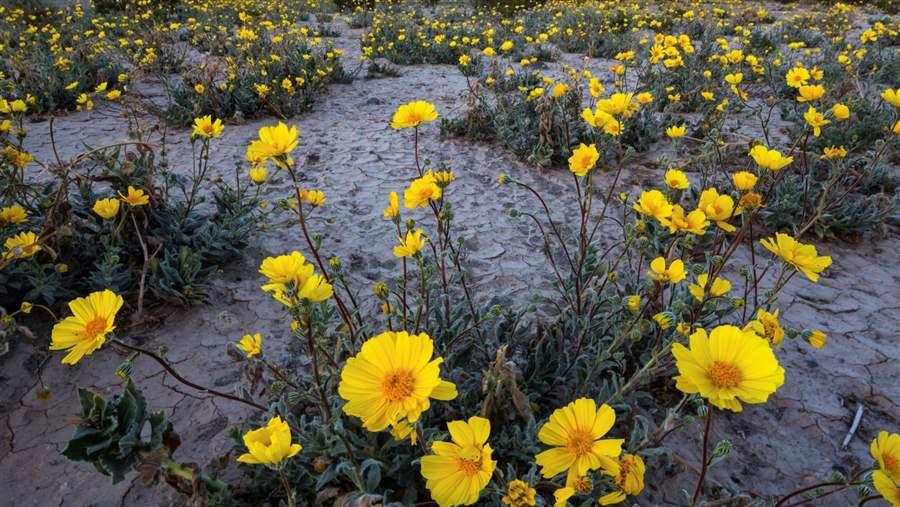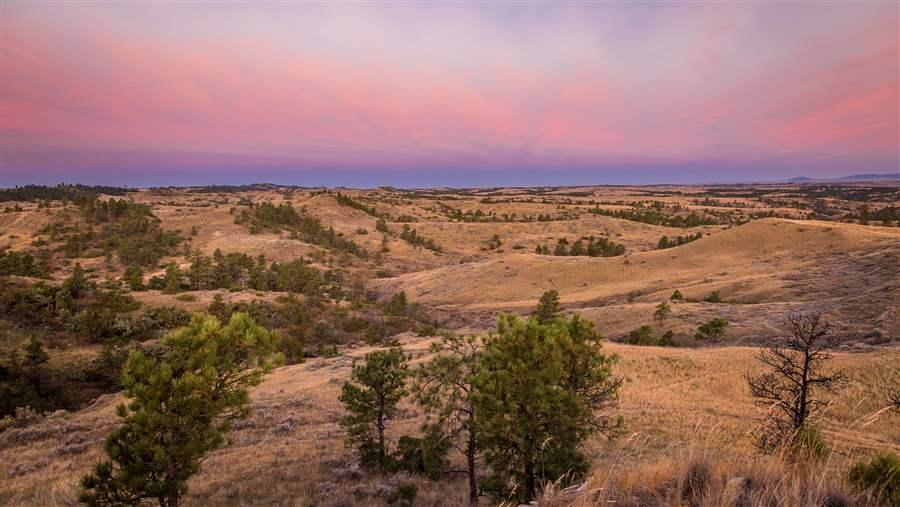Revised Public Lands Process Must Involve All Stakeholders
Community input key to balancing conservation and development

Blooming wildflowers brighten the Silurian Valley in California’s Mojave Desert. This pristine landscape is conserved under the Bureau of Land Management’s Desert Renewable Energy Conservation Plan.
Bob Wick, BLM
As Americans, we are fortunate to share in the ownership of millions of acres of public lands, many of which are overseen by the Bureau of Land Management (BLM). That means each of us has a say in how these lands are managed through the public process the agency administers to develop land use plans.
On July 3, the BLM requested public comment on proposed revisions to its land use planning process—the first step in replacing a rule that dates back to the mid-1980s. A previous update of that rule, known as Planning 2.0, was implemented in December but repealed by Congress in March.
Planning 2.0 was intended to increase stakeholder involvement in land use planning and speed the completion of plans. “That rule provided additional opportunities for stakeholders and governments to be involved at the front end of the land use planning process, in order to increase agency transparency and avert conflict once the plan is complete,” said Jesse Juen, president of the Public Lands Foundation, a nonprofit organization made up of retired BLM employees.

Rolling hills unfurl toward a pastel sky near Horse Camp Trail, Montana, about 120 miles north of Billings. These public lands are part of the BLM Lewistown Field Office planning area, which the agency is reviewing.
Tony Bynum for The Pew Charitable Trusts
A common complaint about the planning process is that it takes too long and is too often the subject of legal challenges, factors that contribute to seven- to 10-year waits for the BLM to approve a plan and resolve associated lawsuits. The Pew Charitable Trusts agrees that the public shouldn’t have to wait that long, and we believe that the BLM can shorten approval times and produce better plans by involving all stakeholders early in the process, taking into account new science and other relevant data, and keeping the public fully informed as plans for our public lands are developed. By doing those things, agency decision-makers can create plans that balance responsible development with reasonable conservation.
Focused and right-sized environmental analysis
The planning process must be flexible enough to allow for new data, based on the latest science, policy, and public opinion. If such information becomes available after a plan is completed, the agency should consider amending the plan but should not have to restart the process from the beginning. Also, animal and plant species don’t abide by state boundaries. Accounting for that when plans span multiple field offices will help reduce redundancy, and officials can further simplify processes by working with citizens whose land abuts BLM areas on management of species and ecosystems.
The planning process should be transparent
The BLM must make information about the planning process easily accessible, transparent, and up-to-date, and include details tailored to the communities that will be most affected by the policy. The agency should also coordinate its public-facing information with that which state and local governments are publishing. BLM staff should facilitate citizen participation in the planning process, make public communications a top priority at every stage in the planning process, and include on the agency’s website a standardized graphic showing, in real time, where each plan stands in the initiation-to-implementation process.
Work to reduce litigation
To invite fewer lawsuits involving the agency’s policies, BLM officials must streamline their processes to produce plans that consider public input, economic impact, and the latest science. And keeping the public well-informed could provide an avenue for resolving disagreements without taking legal action.
Being good neighbors
The agency should work to build trust both with and among stakeholders to help ensure a collaborative and integrated process. It should begin early and provide an opportunity for everyone—ranchers, miners, energy developers, private landowners, recreation enthusiasts, other members of the public, and federal, state, and local agencies—to participate. Also, the agency must give special attention to tribes to ensure that they have timely access to current information.
This collaboration must transcend state and intragovernmental boundaries. For instance, when working on a plan for land in one state, the BLM should share wildlife migration and habitat data with officials in surrounding states and in other federal agencies with oversight of the land. That would foster coordinated management that in turn would probably improve conditions for the species. That would also be a win for scientists, sportsmen, wildlife watchers, and other backcountry enthusiasts.
Smart public land planning is an investment in the future
The BLM should be thoughtful in revising its planning process. As Public Lands Foundation’s Juen says, “While we support BLM streamlining and enhancing the planning and NEPA process, we believe the most successful efforts revolve around place-based collaboration and building trust between participants.” Doing so requires patience and is seldom quick, he adds. We agree, and we urge Interior Secretary Ryan Zinke to weigh carefully the comments that BLM officials have asked for from the American public—the owners of the BLM estate.
Ken Rait directs the western lands initiative for The Pew Charitable Trusts.











